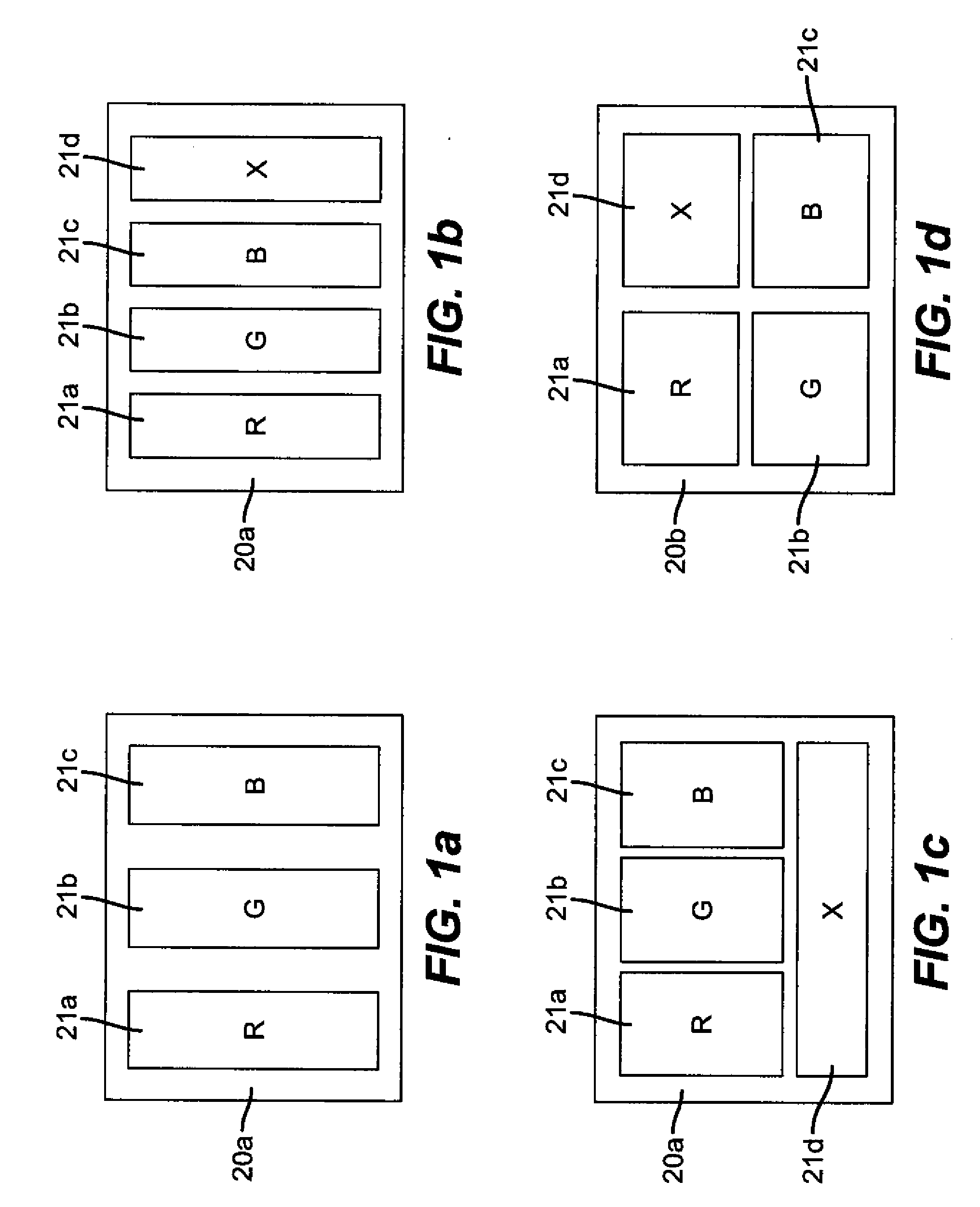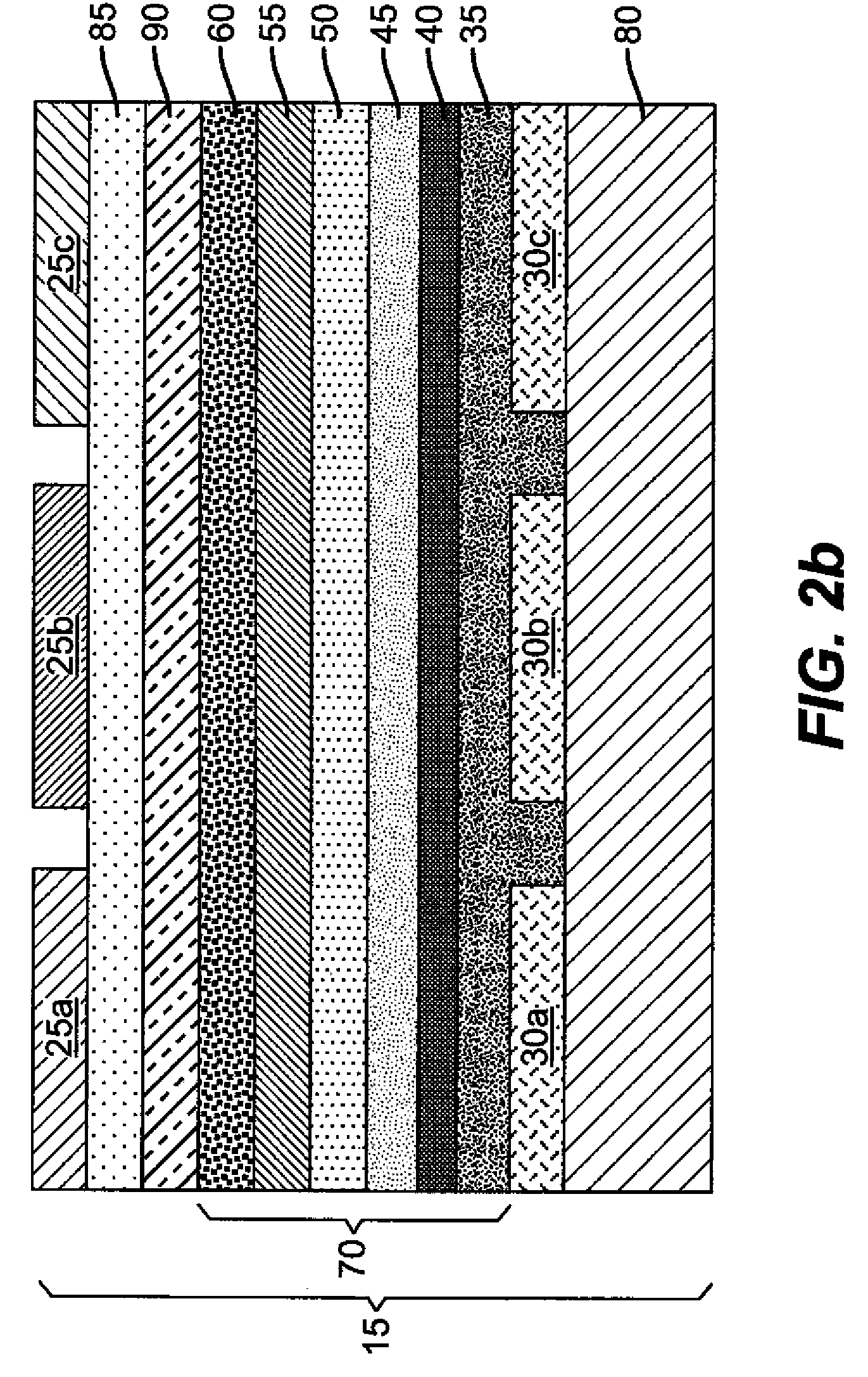Color filter element with improved colorant dispersion
- Summary
- Abstract
- Description
- Claims
- Application Information
AI Technical Summary
Benefits of technology
Problems solved by technology
Method used
Image
Examples
example 1
[0076]To a 1 L stainless steel cold water jacketed vessel with a specially designed baffle, 244 g of a 1:1 (w / w) solvent mixture comprised of propylene glycol monomethyl ether acetate (PGMEA) and cyclohexanone was introduced along with 11.25 g of dispersant polymer Solsperse 41000. Then, a 50 mm diameter tool steel D blade connected to a vertical Caframo mechanical stirrer was submerged into the solvent. While operating the stirrer at 500 rpm, 45 g of Inv-1 was added followed by 600 g of 0.2 mm Zirstar (zirconium silicate milling media). The resulting dispersion was milled by gradually increasing the mixing rate starting with 18 h @1600 rpm, then ramping to 2800 rpm over 6 h, holding at 2800 rpm for 18 h and finishing with 5 h @3000 rpm. The dispersion was isolated after separation from the milling media by pressure filtration through a 20 micron filter. The particle distribution of the dispersed pigment was confirmed by using a dynamic light scattering sizing technique (FIG. 3a).
Pr...
example 2
[0077]The experiment was executed as outlined in Example 1 with the following exceptions; Inv-1 was replaced with the analogous non-fluorinated reference material bis(phthalocyanylalumino)tetraphenyldisiloxane and the starting 1600 rpm mixing rate was extended to 22 h. while omitting the 6 h ramp step before 18 h mixing @2800 rpm and the final 5 h @3000 rpm. The particle distribution is shown in FIG. 3b.
[0078]A comparison of the particle size distribution in terms of cumulative volume % below a certain size for Examples 1 and 2 are shown in Table 1.
TABLE 1Cumulative % Below in SizenmExample 1Example 26540100.0100.0550099.399.9462095.497.3389091.191.4327088.683.8275087.476.5231086.669.8194085.863.4164085.256.8138084.650.011600.043.49700.037.88200.033.76900.031.05800.029.44900.028.44100.027.73400.027.12900.00.02400.00.02000.00.01700.00.01400.00.01200.00.01000.00.0860.026.8720.026.06884.024.95183.423.44382.621.53681.419.33079.616.92676.814.32272.411.51865.38.61553.55.71333.82.7112.80....
example 3
Yellow Dispersion used to Make Green Filters
[0079]The solvent PGMEA (545 g) was combined with dispersant polymer Disperbyk 161 (31.5 g solution w / 4.5% active polymer) in a 2.0 L stainless steel cold water jacketed vessel with no baffle. A 70 mm diameter high-shear Cowles disperser blade connected to a Ross mechanical stirrer (Model HSM-100H2) was submerged and the stirrer set to 500 rpm. While in operation, 50.4 g of Pigment Yellow 185 was introduced followed by 700 g of 50-micron milling media composed of crosslinked polystyrene divinyl benzene. The dispersion was milled by gradually increasing the mixing rate; 1.5 h @1000 rpm, 16 h @1100 rpm, and 3 h @1200 rpm. The dispersion was isolated from the milling media by pressure filtration through a 5 micron filter.
[0080]In a preferred process, a baffled vessel is used, the pigment to polymer ratio is 1:0.5 and the milling time is reduced to 2 h.
Green Filter Preparation
[0081]Inventive Green Filter: A sample of the fluorinated phthalocya...
PUM
| Property | Measurement | Unit |
|---|---|---|
| Time | aaaaa | aaaaa |
| Percent by volume | aaaaa | aaaaa |
| Percent by volume | aaaaa | aaaaa |
Abstract
Description
Claims
Application Information
 Login to View More
Login to View More - R&D
- Intellectual Property
- Life Sciences
- Materials
- Tech Scout
- Unparalleled Data Quality
- Higher Quality Content
- 60% Fewer Hallucinations
Browse by: Latest US Patents, China's latest patents, Technical Efficacy Thesaurus, Application Domain, Technology Topic, Popular Technical Reports.
© 2025 PatSnap. All rights reserved.Legal|Privacy policy|Modern Slavery Act Transparency Statement|Sitemap|About US| Contact US: help@patsnap.com



